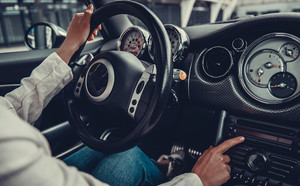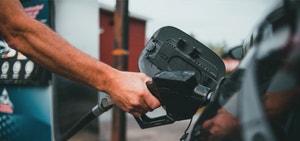Used Car Inspection Checklist for Buyers
By Kijiji Autos
While buying a used car can often save you a lot of money, it also comes with risks. To avoid expensive surprises, it's important to thoroughly inspect the vehicle, price and paperwork before committing. Plan on spending anywhere from one to three hours on your inspection, so make sure to allow for ample time to do a thorough vehicle check. Our used vehicle checklist walks you through the most important things to look for, so you can feel confident in your purchase.
1. Exterior
Start your inspection with a full visual assessment of the car's exterior. It's best to do this during daylight hours, as it's much harder to do a thorough used car inspection after dark. Here's what to check:
- Paint: Inspect the exterior for any dents or scratches. Ensure the paint colour is consistent across all body panels. Mismatching panels could be a sign that the vehicle has been in an accident.
- Rust: Check the body, wheel wells, undercarriage and under the hood for any signs of rust.
- Doors: Open and close the driver and passenger doors, trunk and hood. Check the rubber seals to ensure they are in good condition with no tears or rot.
- Glass: Inspect the windshield and windows for chips, cracks and scratches.
- Tires: Check the tires for excessive or uneven wear, as this could indicate neglect or mechanical problems. Confirm whether the vehicle comes with both summer and winter tires, and be sure to inspect both sets.
- Undercarriage: Use a flashlight to look under the car and on the ground. You want to check for any signs of leaks, rust or anything else unusual.
- Engine: Do a visual inspection under the hood, looking for rust and overall wear and tear. If you're not familiar with what your car engine should look like, an online image search for your car model + engine should give you a good visual for comparison. Once you've visually inspected the engine, look for signs of oil or water leaks and rust. Finally, check all fluids (like engine oil and coolant) to ensure the vehicle is well-maintained
2. Interior
As with a house, the inside of a car says a lot about its owner and the overall condition of the vehicle. Go inside the car and take your time assessing each of the following:
- Odour: Take a moment to sniff the interior. A strong, damp odour may be a sign of a problem with the ventilation system or carpets, while an acrid smell could be a sign the car was driven by a smoker.
- Seats: Sit in each of the seats to check their condition and comfort, even if you only plan to drive the car. A little wear or a few scratches are to be expected. Ensure all adjustment controls work properly and that you can find a comfortable driving position.
- Windows: Open and close each of the windows, ensuring there are no issues with the controls. If there is a sunroof, check that it opens and closes smoothly and that there are no signs of leaks.
- Climate control: Check that the heat, air conditioning and any other features like heated seats or a heating steering wheel work.
- Infotainment system: Turn on the radio, then test the dashboard and steering wheel controls. You may also want to test any Bluetooth and wireless connectivity functions.
- Lights: Try out the headlights, brake lights and signals. Turn the interior lights on and off.
3. CARFAX report
A CARFAX report is an essential resource often provided by the seller, or you can easily order one online. Simply enter the used vehicle's identification number, and you'll receive a detailed overview of the car's history. What to expect:
- Accident history, including airbag deployment
- Service and maintenance history
- Outstanding payments or liens
- Number of previous owners
- Vehicle usage (history as a rental, taxi, fleet vehicle, etc)
- Unfixed safety recalls
- Approximate odometer reading
4. Maintenance booklet
Conscientious owners follow the maintenance schedule recommended by the manufacturer. While most sellers may not keep detailed notes of the dates and work carried out, the maintenance booklet can still give you clues:
- Invoices: Look for receipts for recent services, repairs and replacement parts. This can help you confirm the vehicle history.
- Maintenance log: Some drivers may log each service in their booklet. If not, ask when the car was last serviced and when it's due for the next one.
5. Test drive
You wouldn't buy a pair of shoes without first trying them on and walking around in them. Taking a test drive is an essential step when buying a used vehicle. Here are some tips for a successful test drive:
- Listen carefully: Drive with the stereo off so you can listen for any concerning knocking or rattling noises.
- Practice parking: If possible, go to an empty parking lot or other quiet area so you can practice parking, turning and braking to get a good feel for the car.
- Take your time: Buying a car is a major purchase, so don't rush. Take your time to understand how the car performs at different speeds and on a variety of roads.
6. Professional vehicle inspection
You have the right and even a responsibility to turn to an independent mechanic for a pre-purchase inspection of the vehicle. It's the best way to know what you're getting into.
- Private inspection: Take the vehicle to a trusted mechanic for a thorough pre-purchase inspection. If a private seller is resistant to the idea of a professional inspection, that could be a major red flag.
- Dealer inspection: When buying from a dealership, you can have the inspection performed onsite or offsite by a mechanic of your choosing. If you're wondering whether dealerships inspect used cars, you may want to look for certified pre-owned vehicles. These go through a thorough inspection and safety process and usually come with extended warranties and other benefits.
7. Extras
The car is great, but do you find the price a touch high? Check to see what's included. Extras like a roof rack or winter tires can affect the purchase price. Some common vehicle extras include cargo racks or organizers, specialty seat covers, floor mats, anti-theft systems, splash guards, wheel locks, and wheel rims.
8. Price
Once all the inspections are done, it's time to negotiate a fair price. Some things to keep in mind:
- Compare prices: Check the asking price against similar ones on Kijiji Autos.
- Pinpoint issues: If you find any problems while inspecting the vehicle, you may be able to use them to negotiate a lower price.
- Financing options: When buying a used car from a dealer, you may have the option of financing or leasing. For private car deals, personal loans or car loans offered by your financial institution are often the best option.
Ready to get behind the wheel of your dream car? By following these steps, you can feel confident you're getting a great deal. Find your next vehicle on Kijiji Autos.
Easily find your next ride on Kijiji Autos
Search now10 Most Popular 7 Seater SUVs in Canada for 2024
In recent years, SUVs and crossovers have replaced minivans and station wagons as Canada's family vehicle of choice. And it's no wonder—with their sporty appeal, generous cargo space and advanced safety features, 7-seater SUVs get Canadian families where they need to go safely, comfortably and in style.10 Most Popular 7 Seater SUVs in Canada for 2024
In recent years, SUVs and crossovers have replaced minivans and station wagons as Canada's family vehicle of choice. And it's no wonder—with their sporty appeal, generous cargo space and advanced safety features, 7-seater SUVs get Canadian families where they need to go safely, comfortably and in style.The most affordable electric cars in Canada in 2023
Looking for a budget-friendly electric car? Discover the 12 most affordable electric cars for sale in Canada on Kijiji Autos. Plus, we answer your FAQs about the costs of driving, charging and insuring an electric car.FWD vs AWD: What’s the Difference & What’s Right For You?
The main difference between FWD and AWD vehicles is the number of wheels their engines are able to send power to. This article will tell you everything you need to know about FWD vs. AWD and help you decide which is right for you.2023 Mazda 3 GX vs GS: What’s The Difference?
The 2023 Mazda 3 is a refined compact car with styling and performance that give it a upmarket feel. In this article we'll break down the differences between the Mazda 3's GS and GX trim packages to help you decide which features you'd want to take or leave, as well as what they'd cost you. Click on the listings on our Search Results page to discover the Mazda 3 GX and GS for sale near you.Coupe vs Sedan: What’s The Difference?
Coupes and sedans can both provide you with practical, fuel efficient transport that can also be fun to drive. Both body styles have their advantages and drawbacks depending on what you’re looking for in a new vehicle. In this article we’ll examine the differences between coupes and sedans and define both vehicles with examples.Is it hard to drive an SUV?
if you're stopping yourself from buying an SUV because you're afraid it's more difficult to maneuver, you'll be pleased to know that's not the case. In fact, first-time drivers will find driving an SUV no more challenging than smaller vehicles like sedans, as long as they follow a few tips outlined below.Top 11 SUVs for Winter Driving in Canada
SUVs are some of the best-suited vehicles for winter conditions with a wealth of standard and available features to help you stay in control and get where you're going when the temperature plummets below zero. Here are 11 of the top SUVs for winter driving.Sedan vs SUV: Which one is right for you?
Sedans and SUVs are two of the most popular kinds of vehicle on the market today. This article will examine the different characteristics of sedans and SUVs, highlighting the areas in which each shines and where their shortcomings lie to help you make the right choice on your next vehicle.Your Guide to Hatchback Cars in Canada
Hatchback cars are defined by their tailgate, which raises up to give access to the rear cargo area. Hatchbacks can feature two or four doors plus the tailgate, and follow what's known as a two-box design. The engine compartment at the front of the car makes up one box, with the second comprising the passenger cabin and cargo area.








